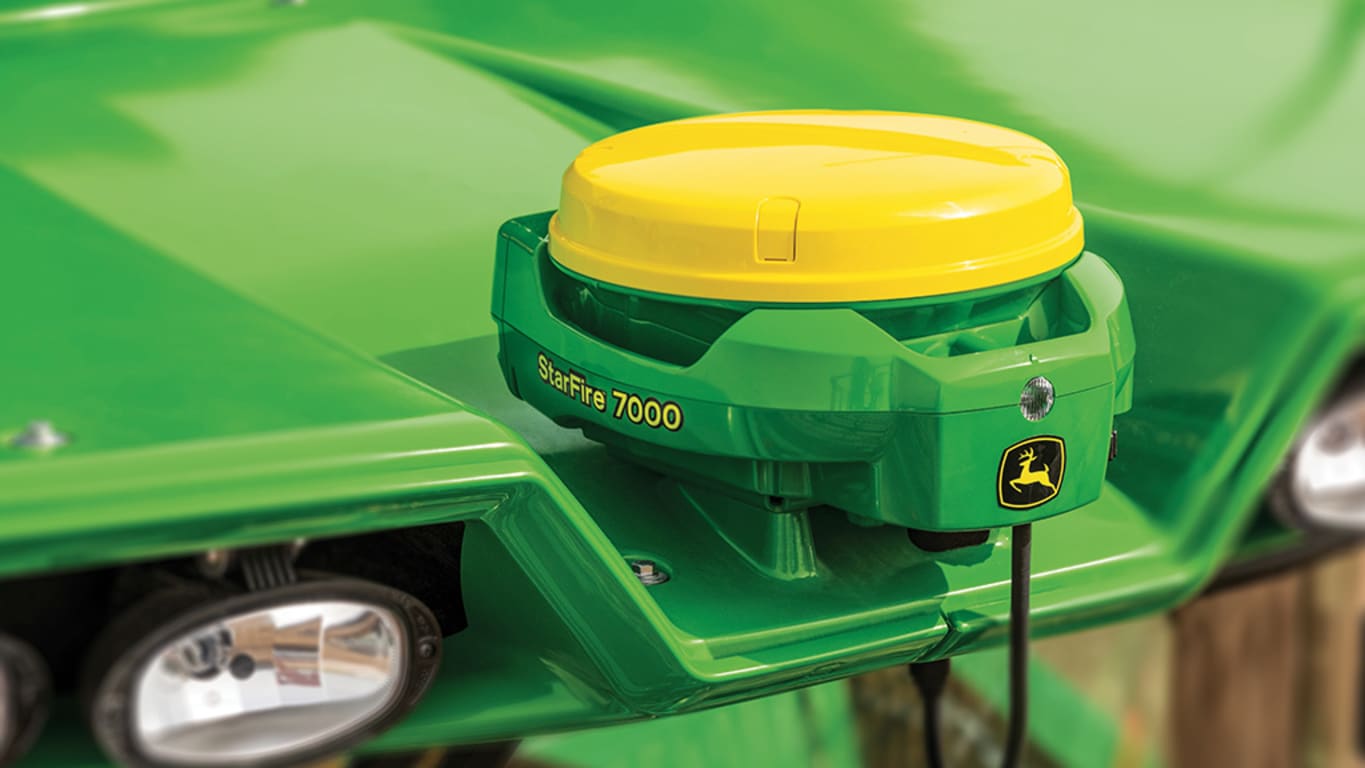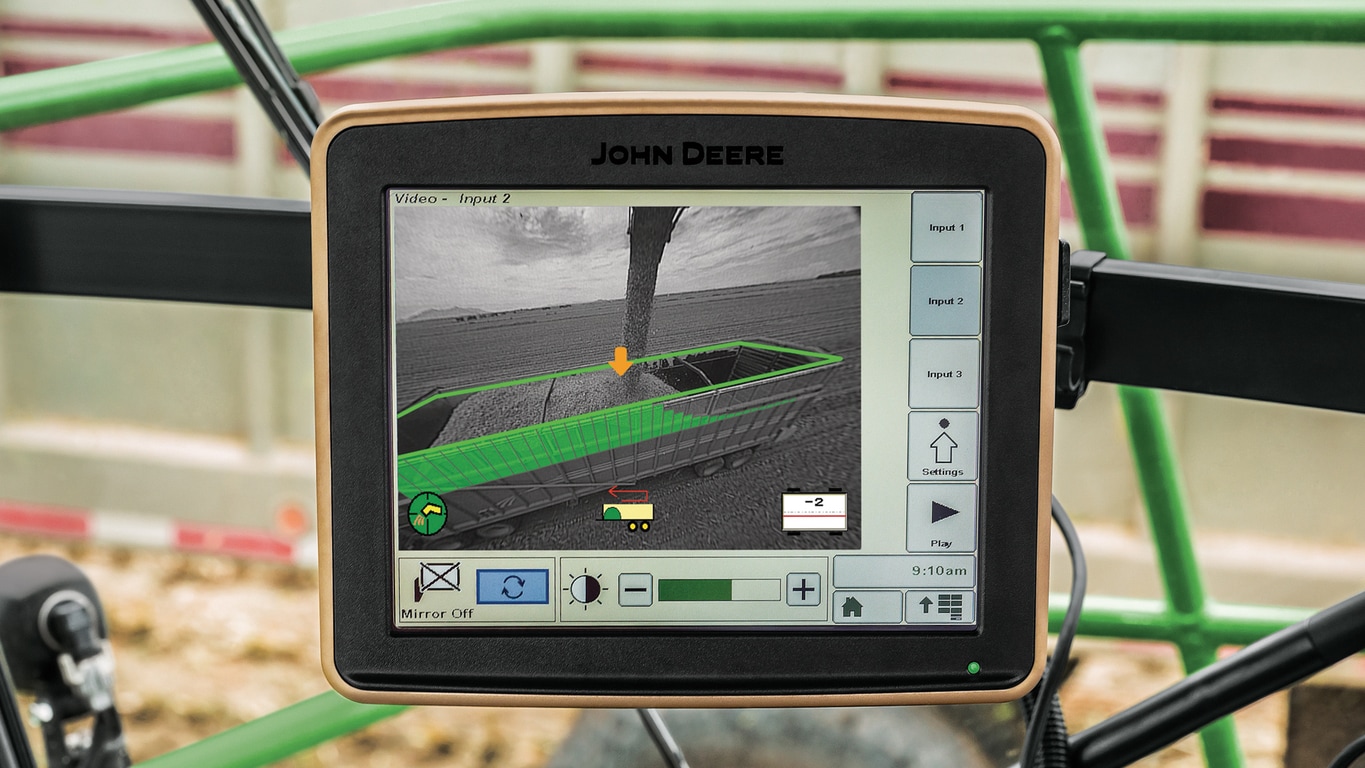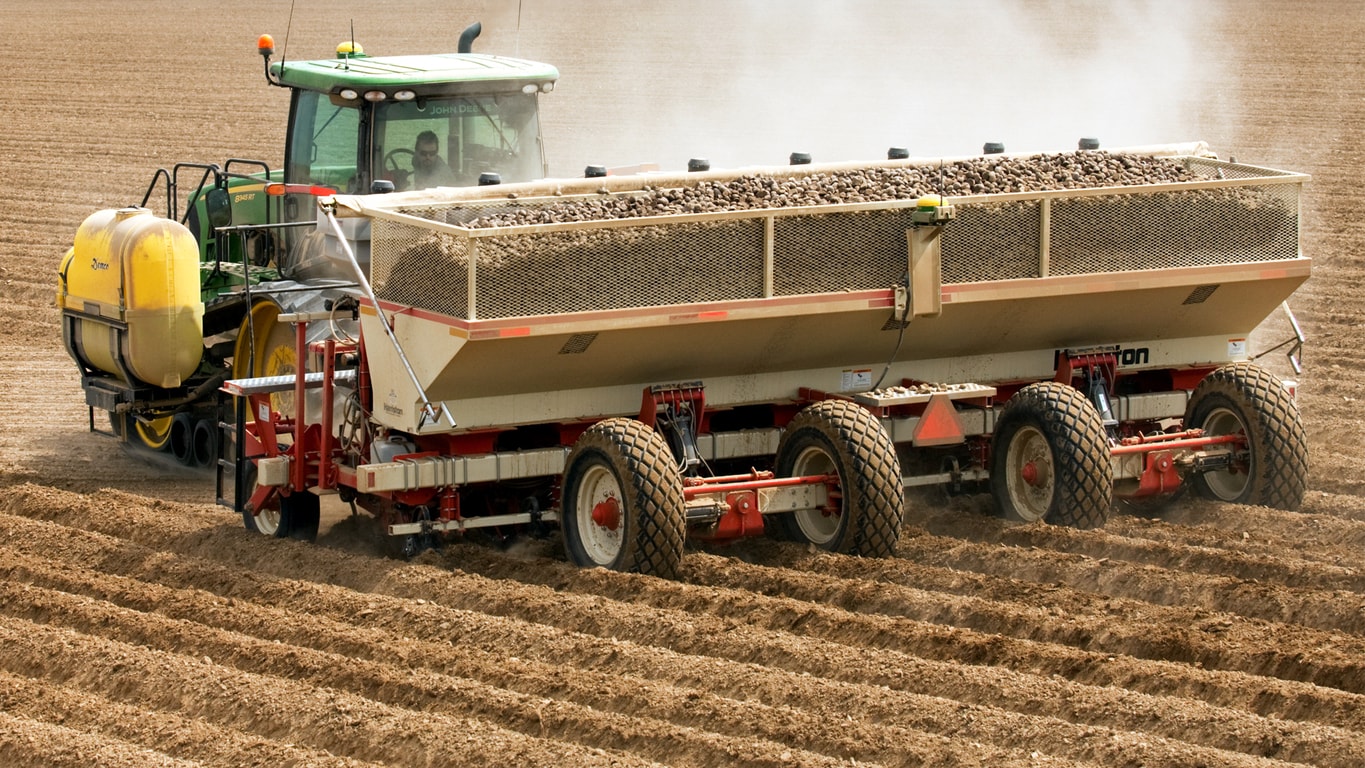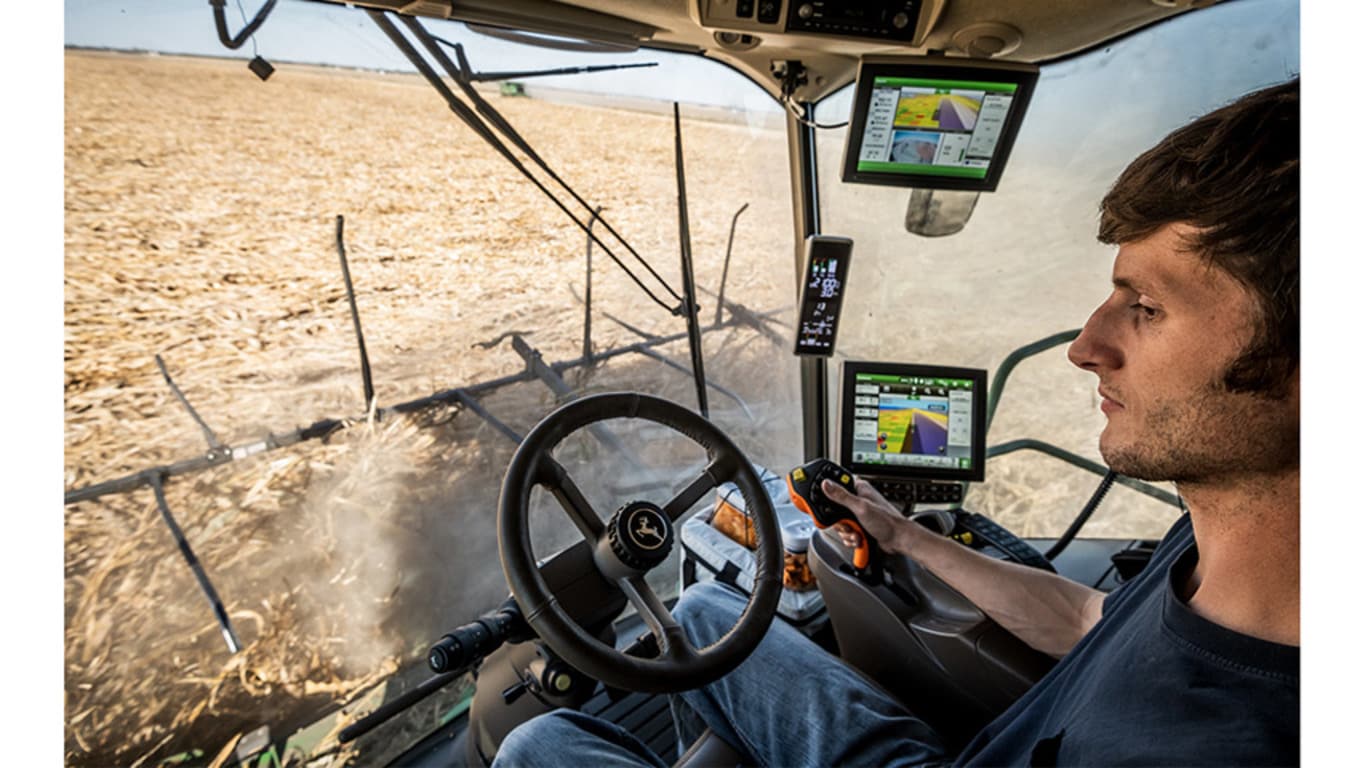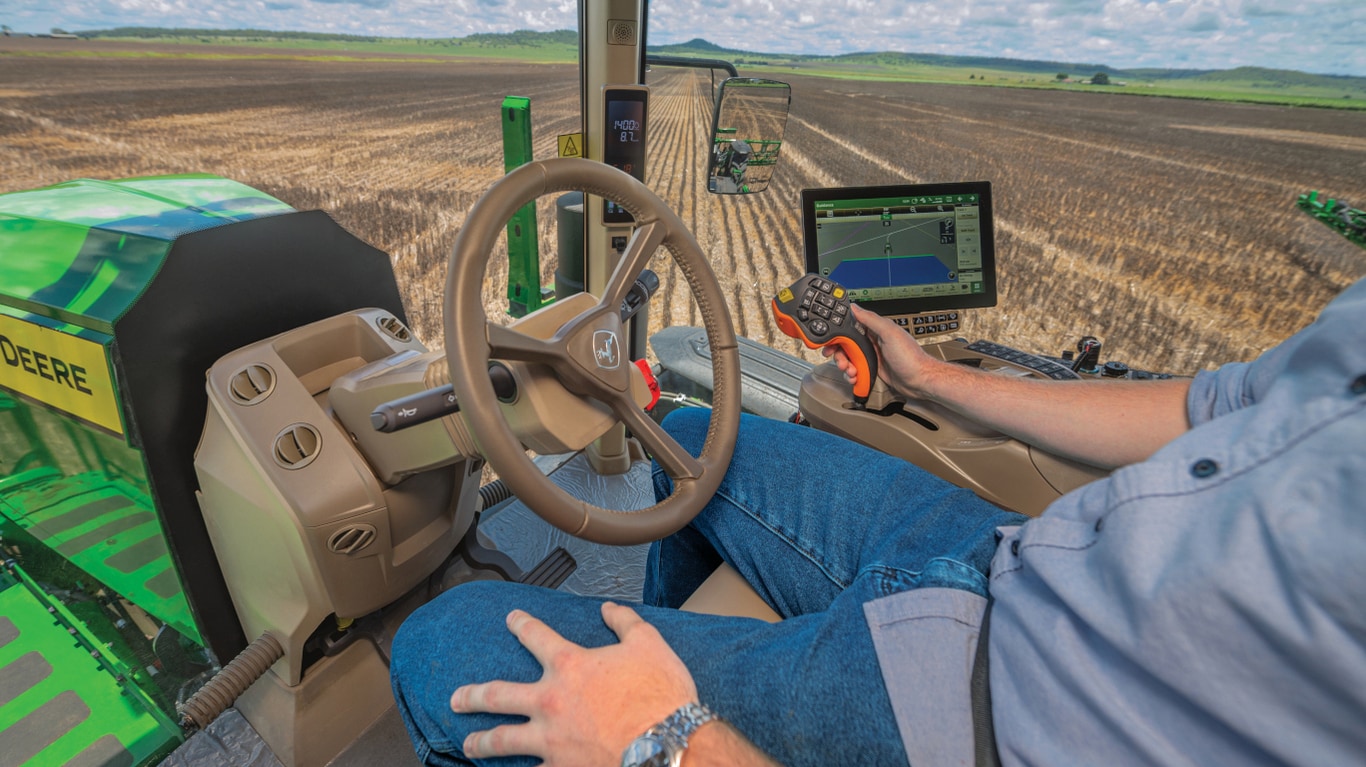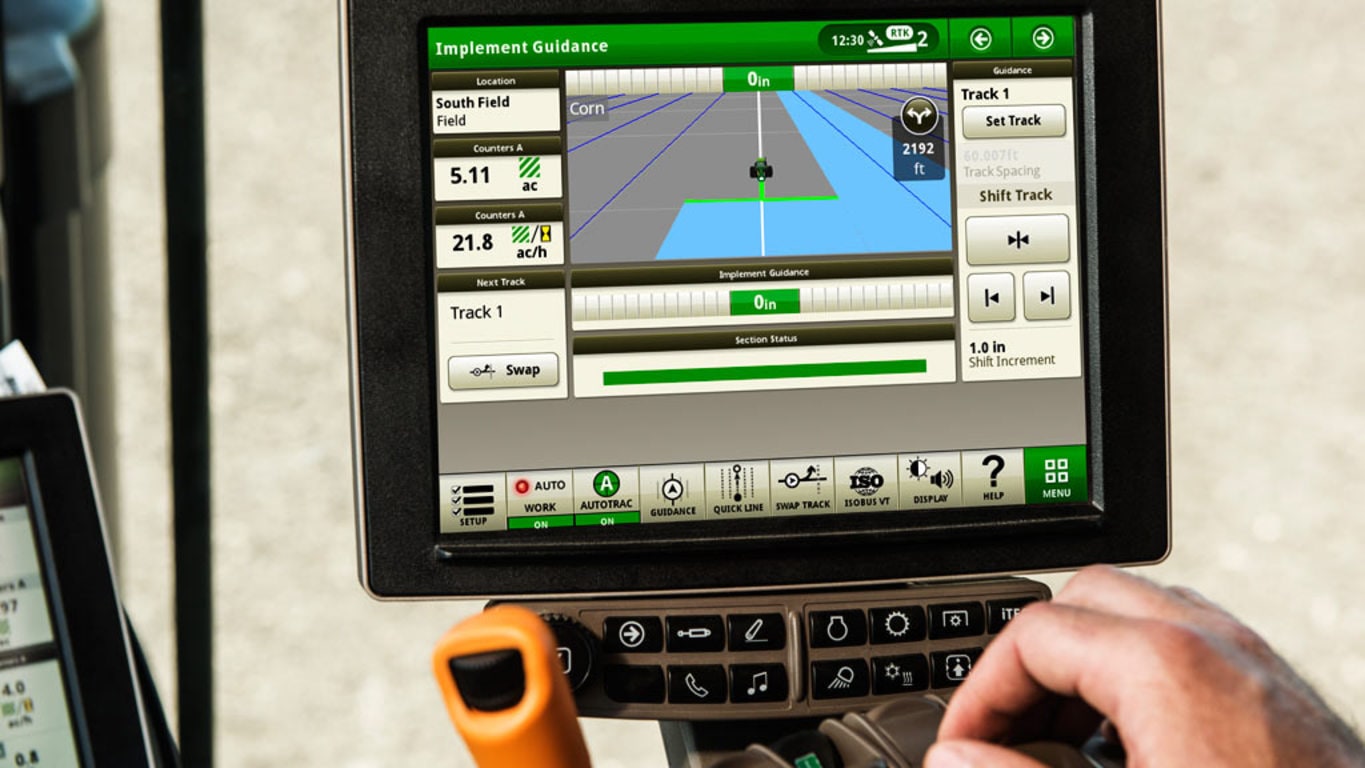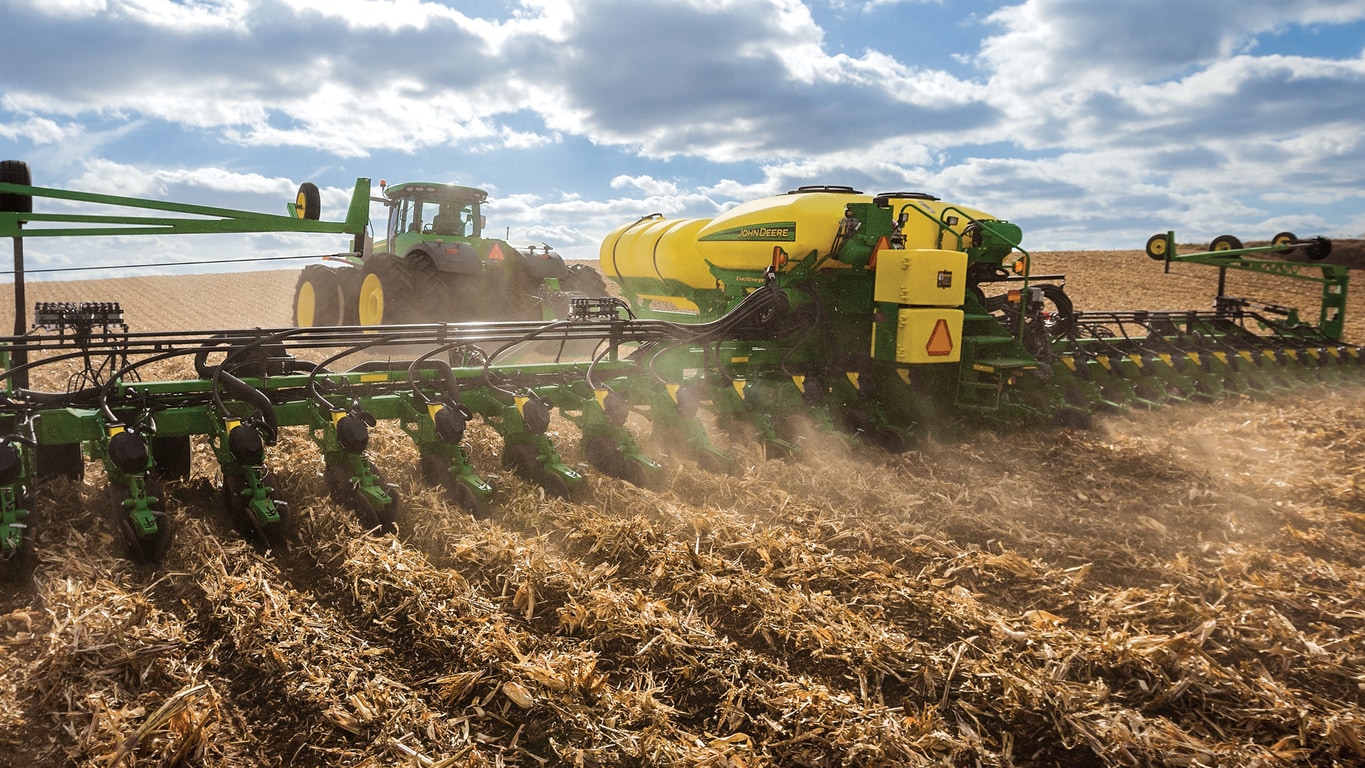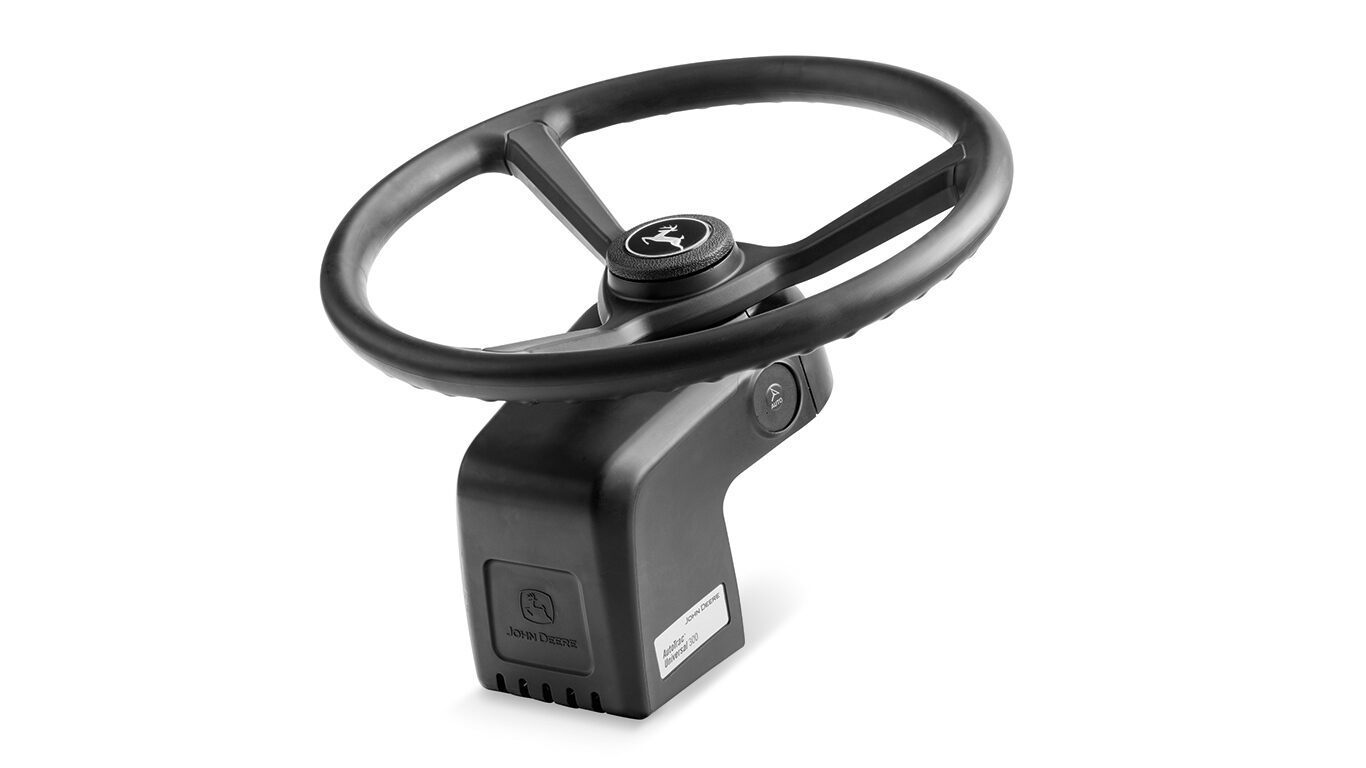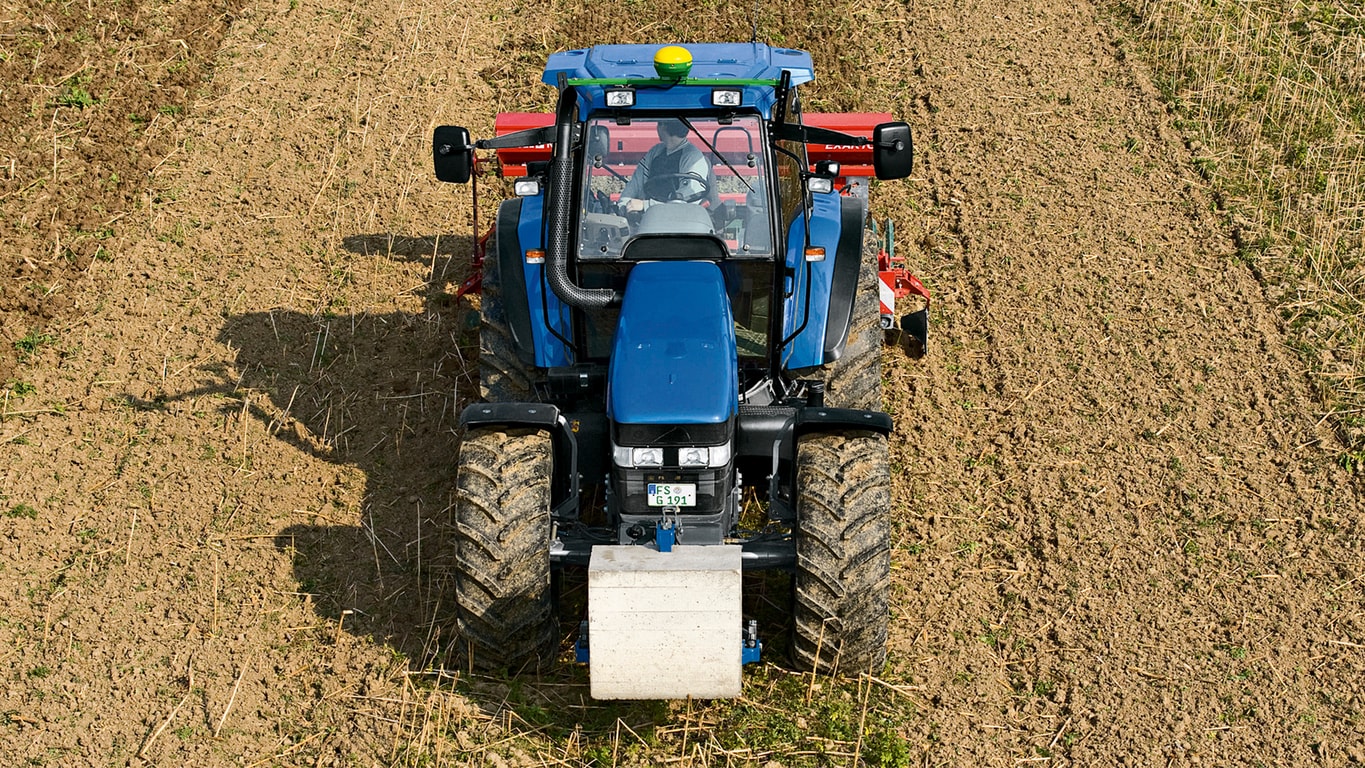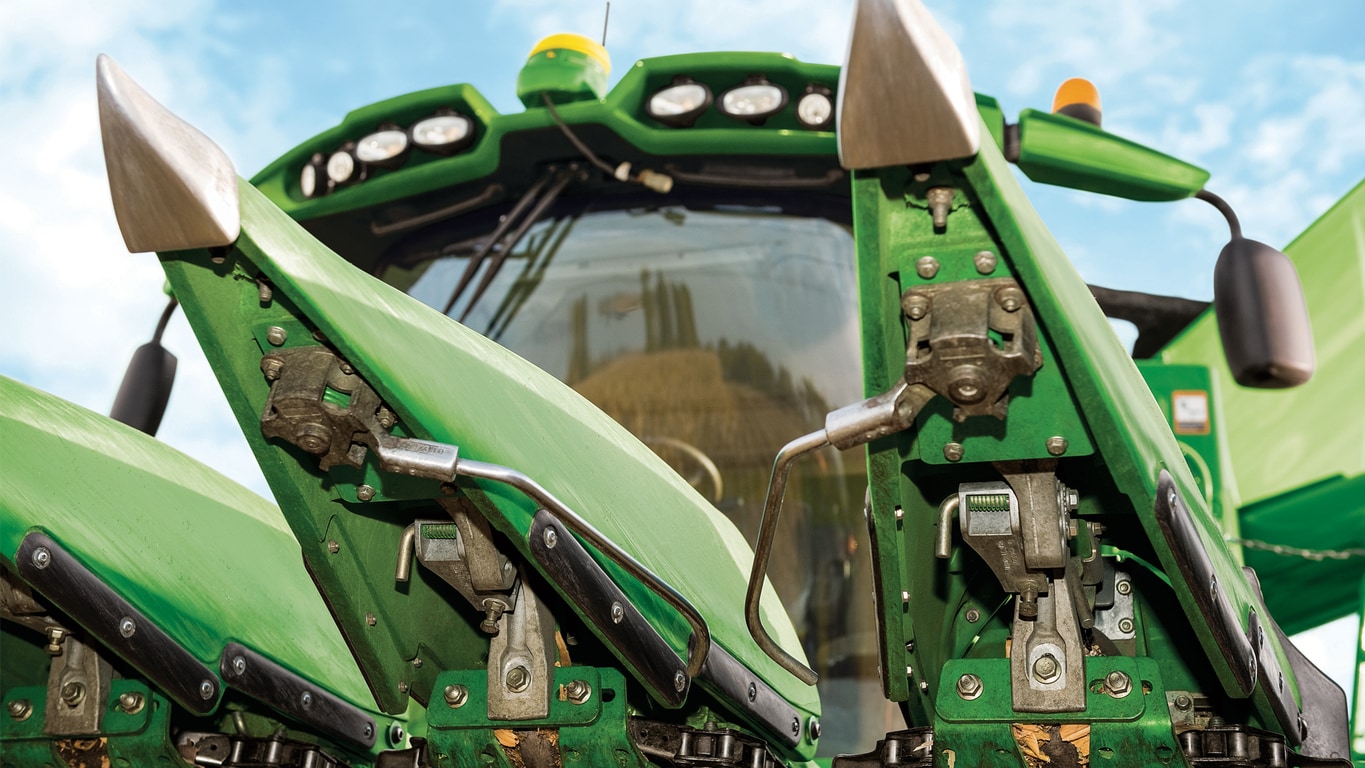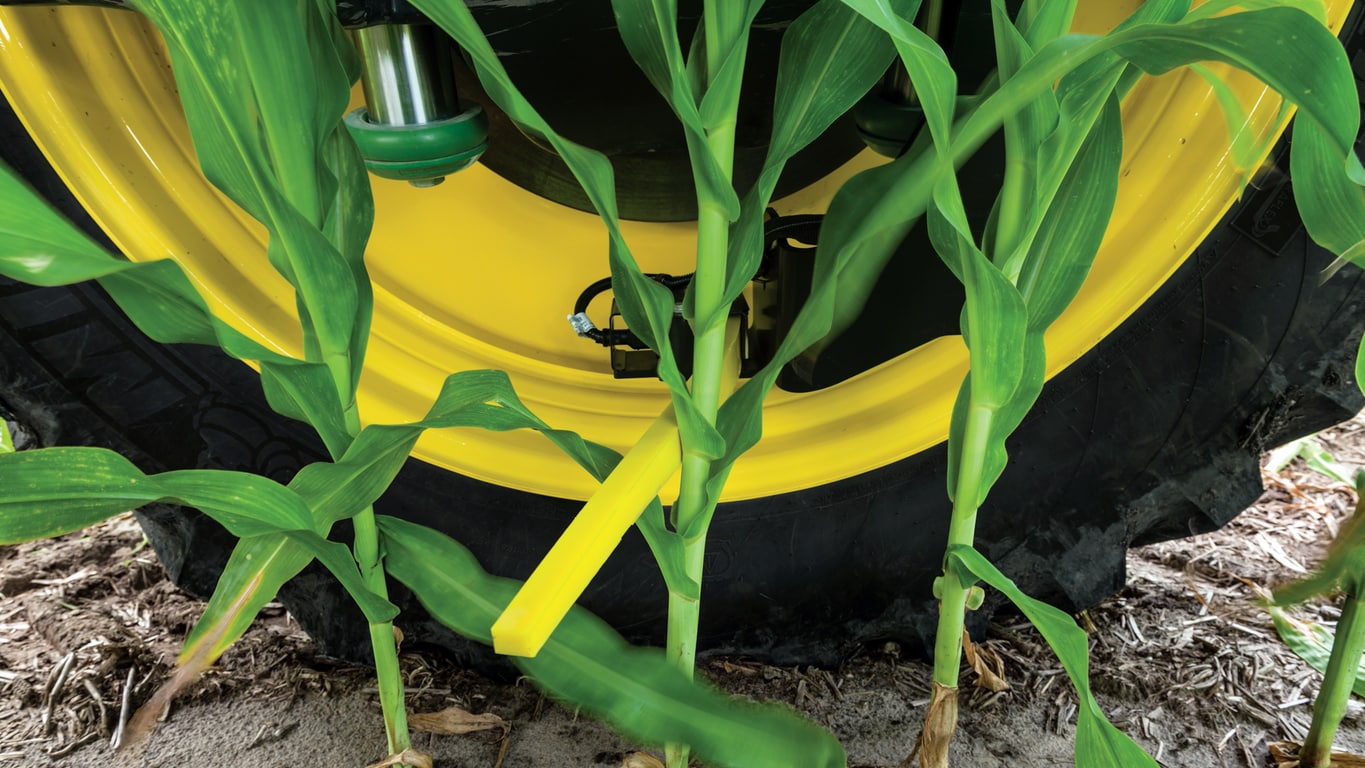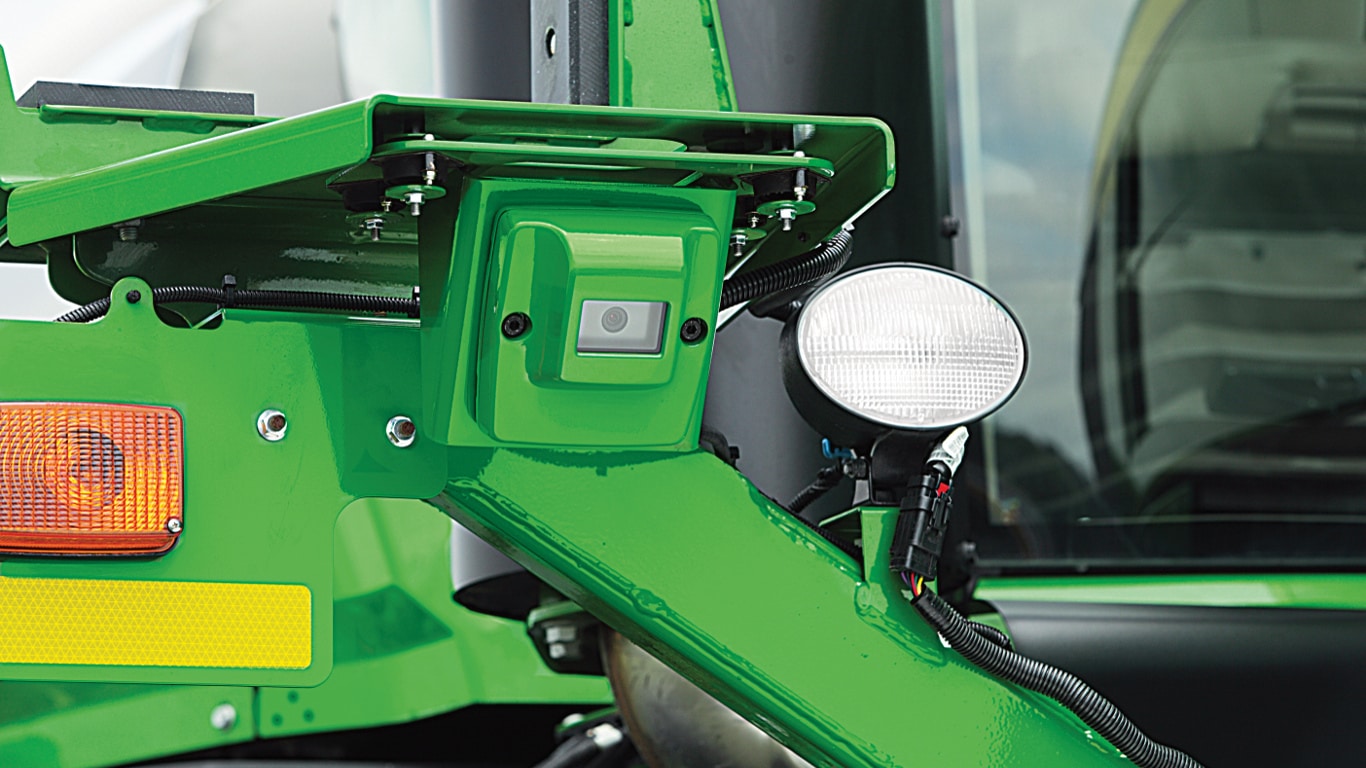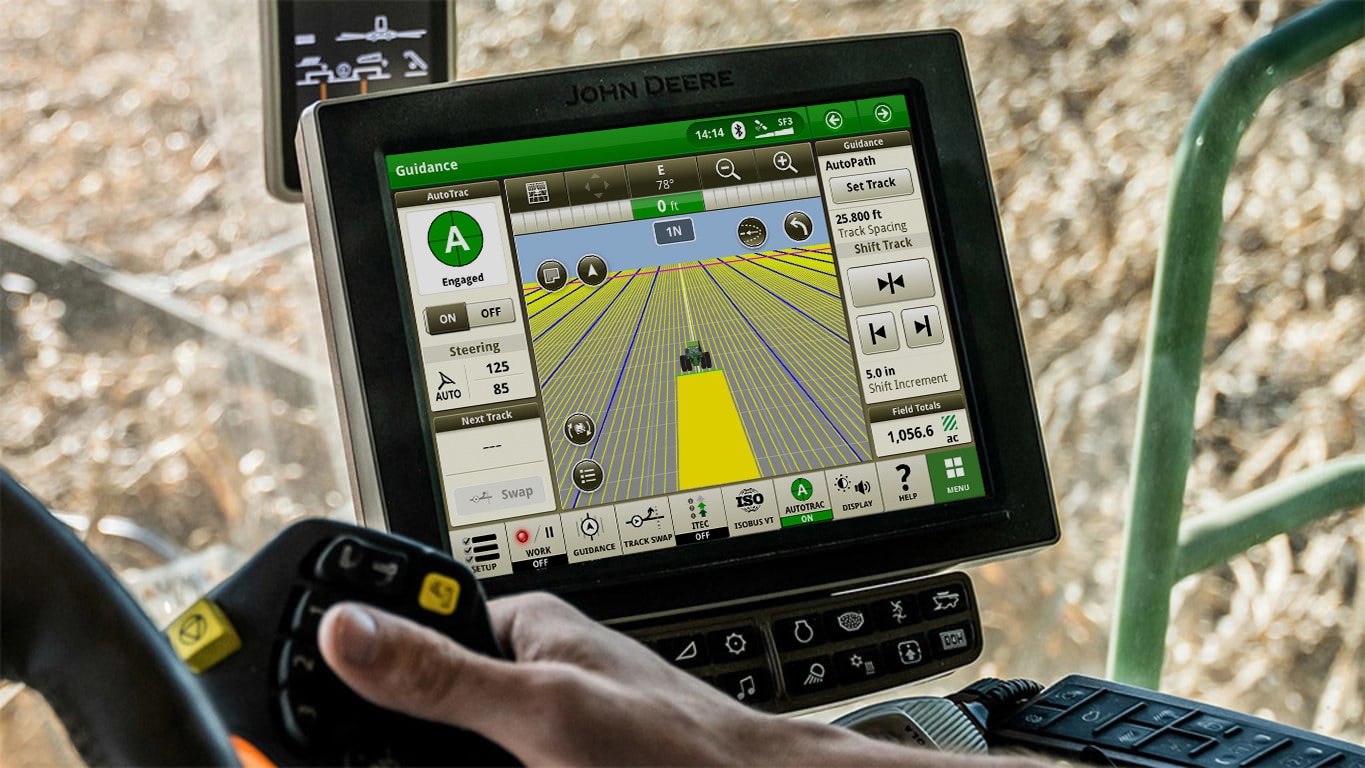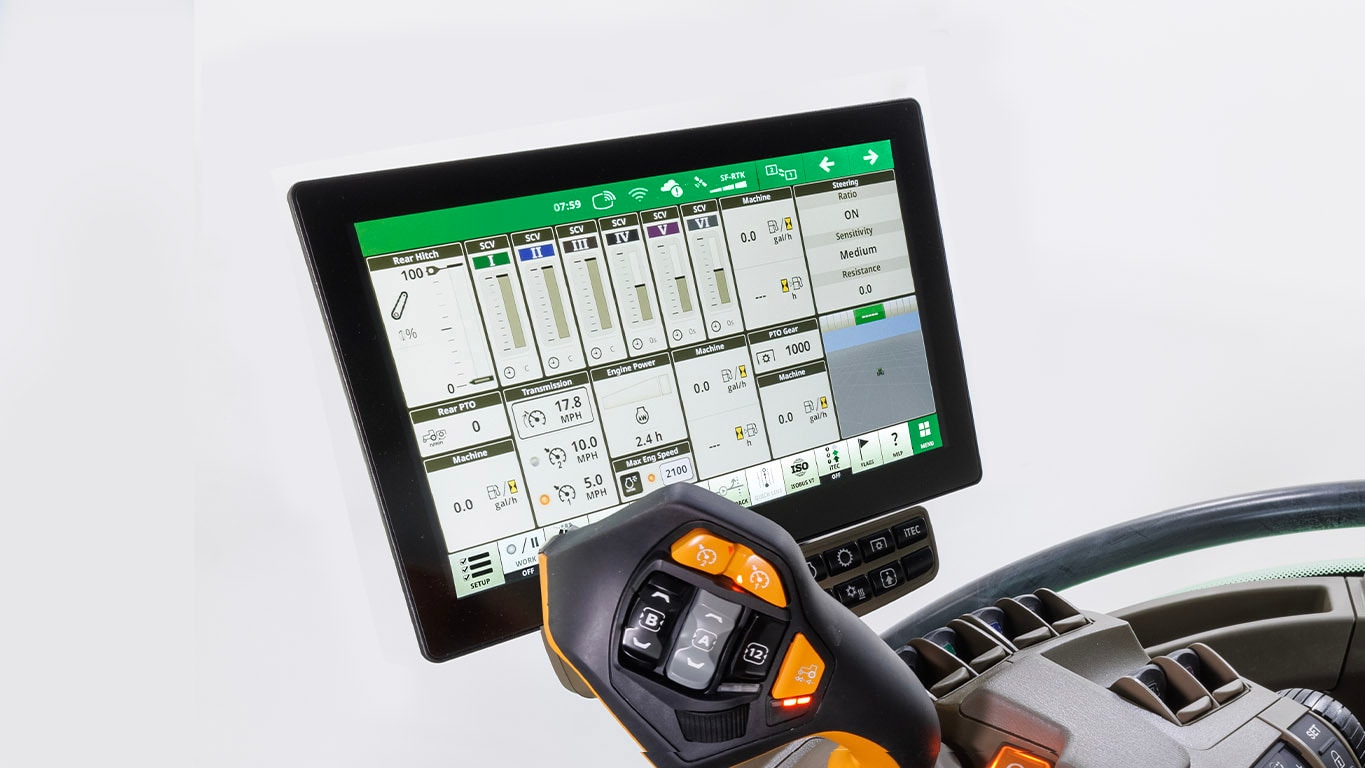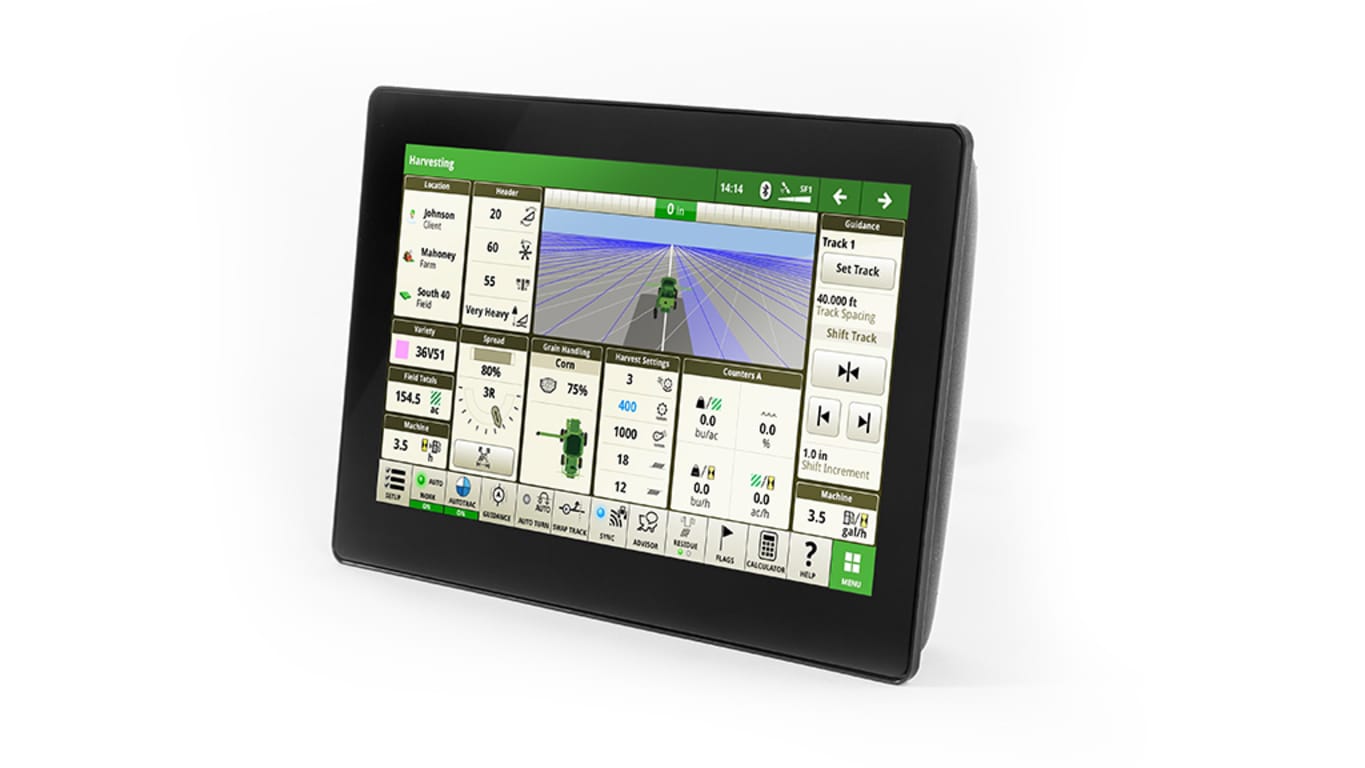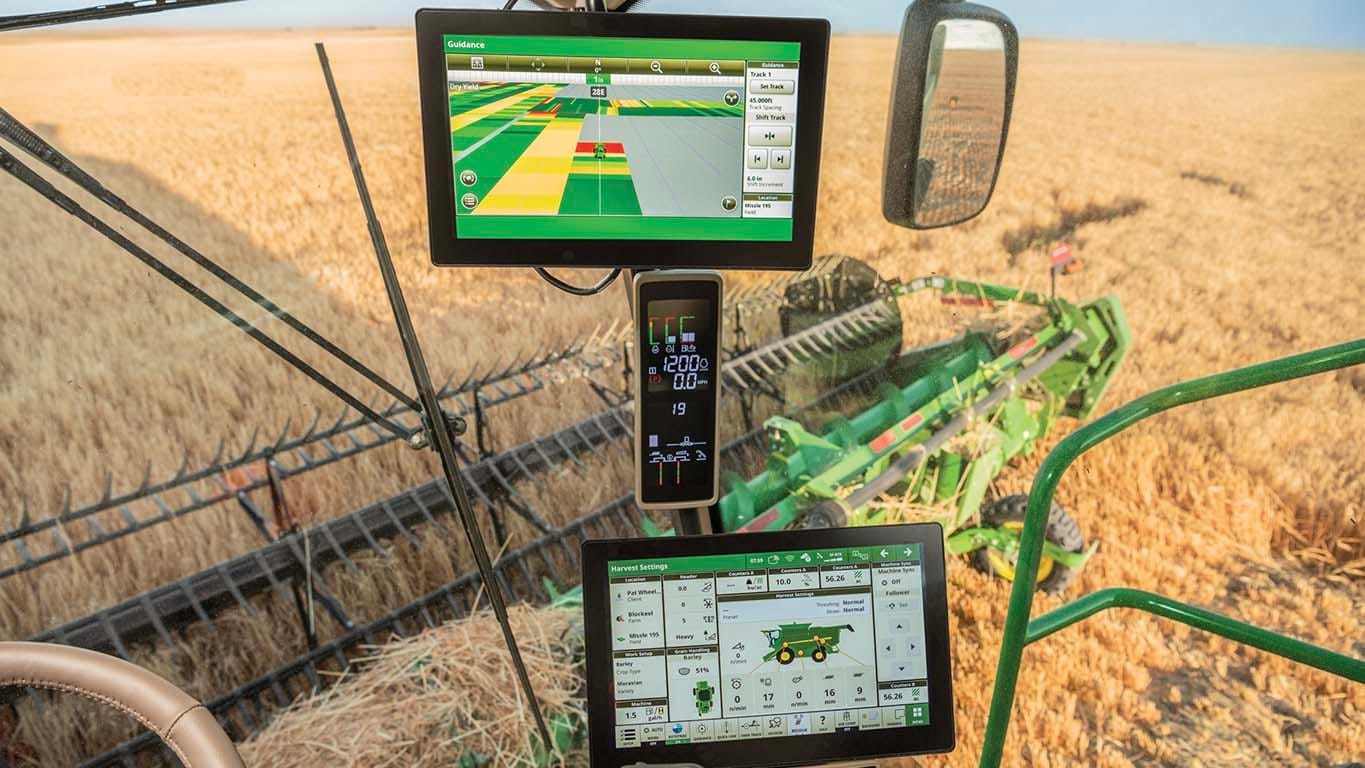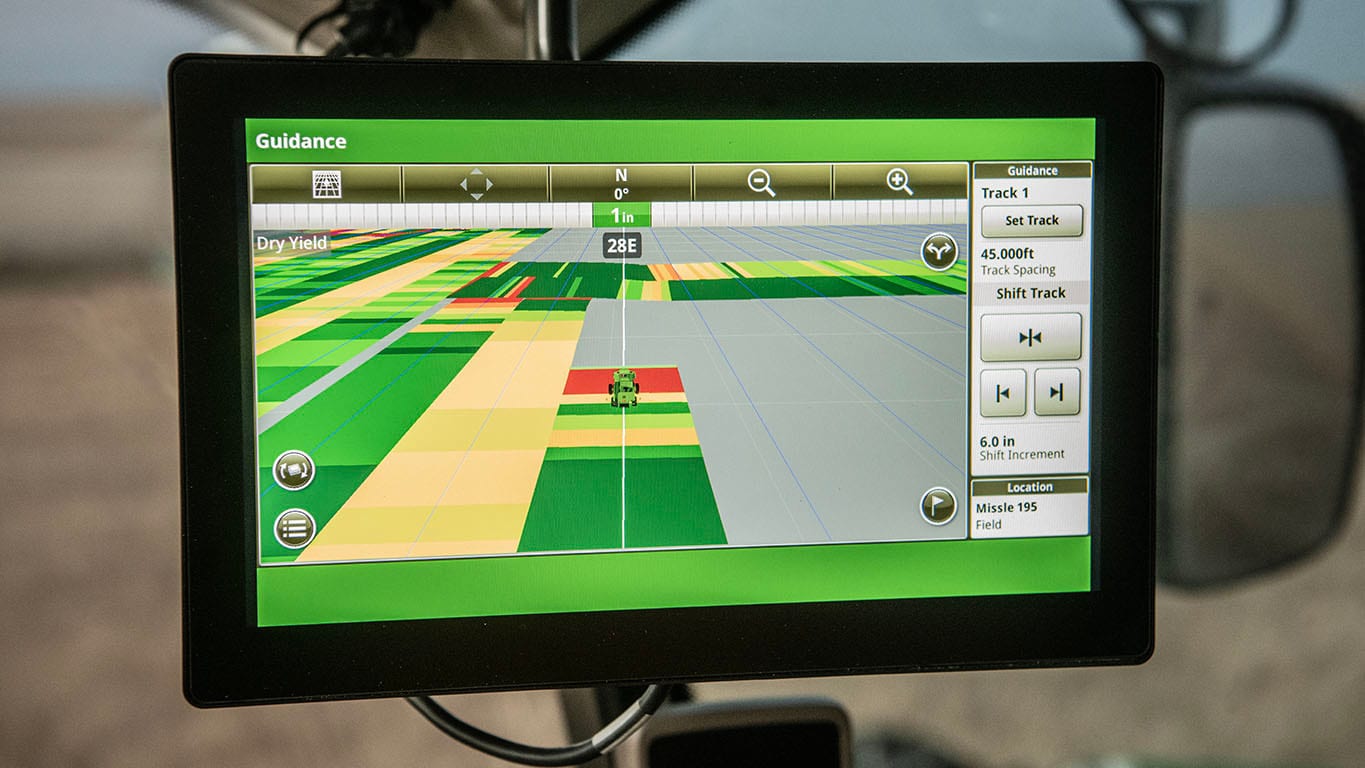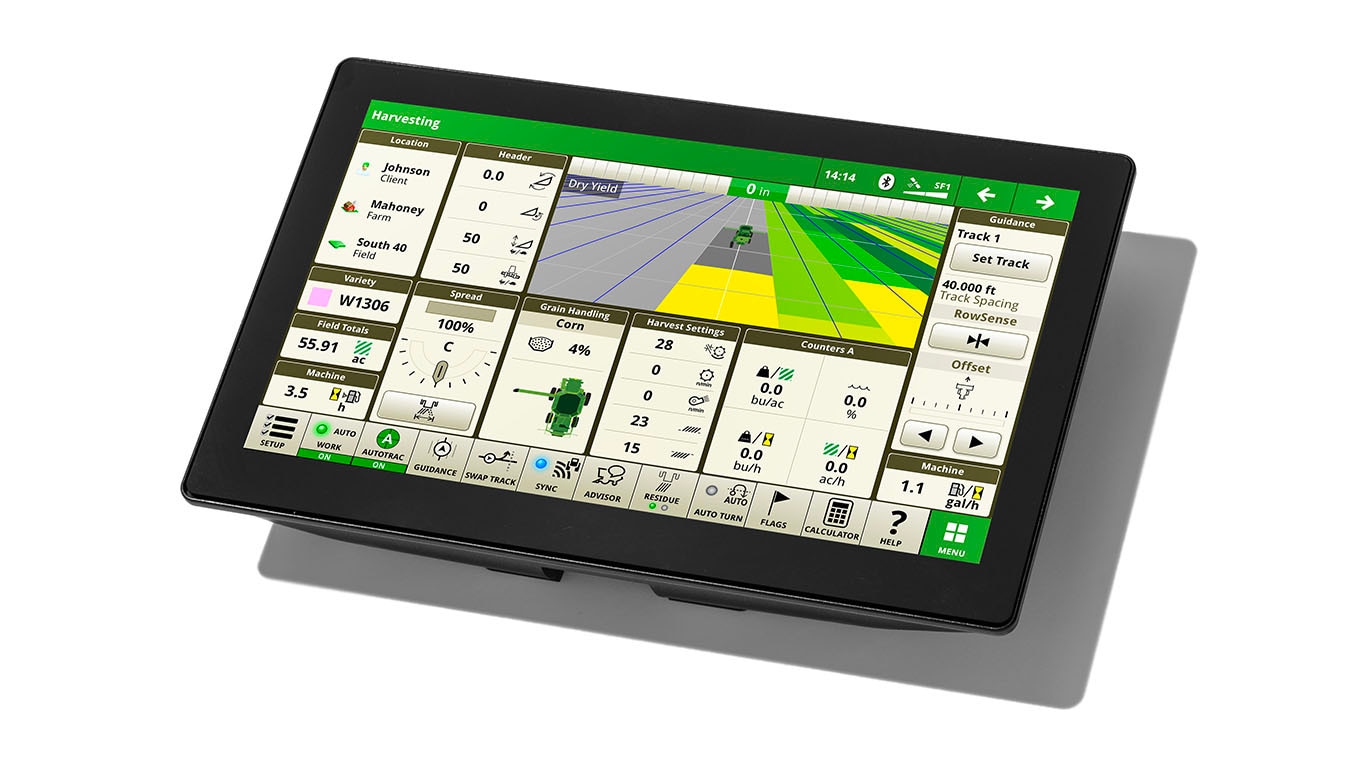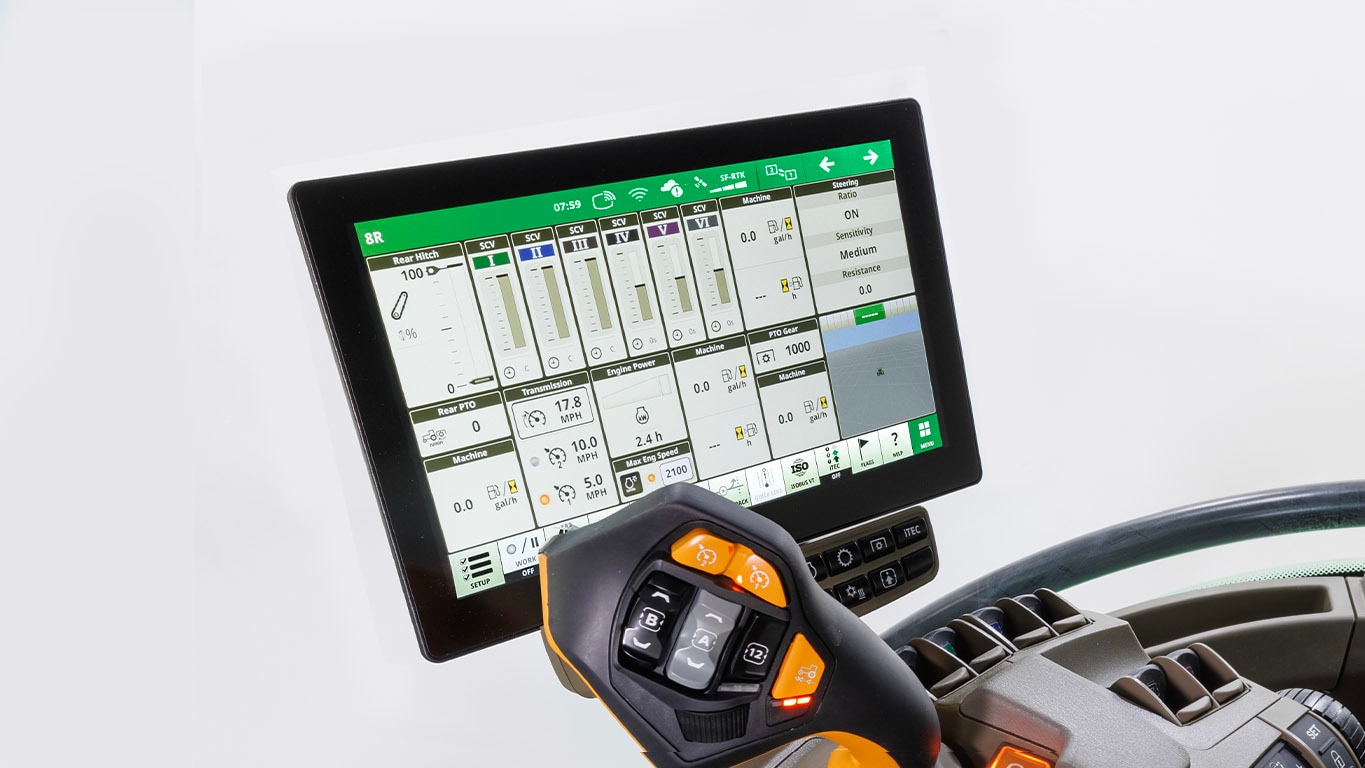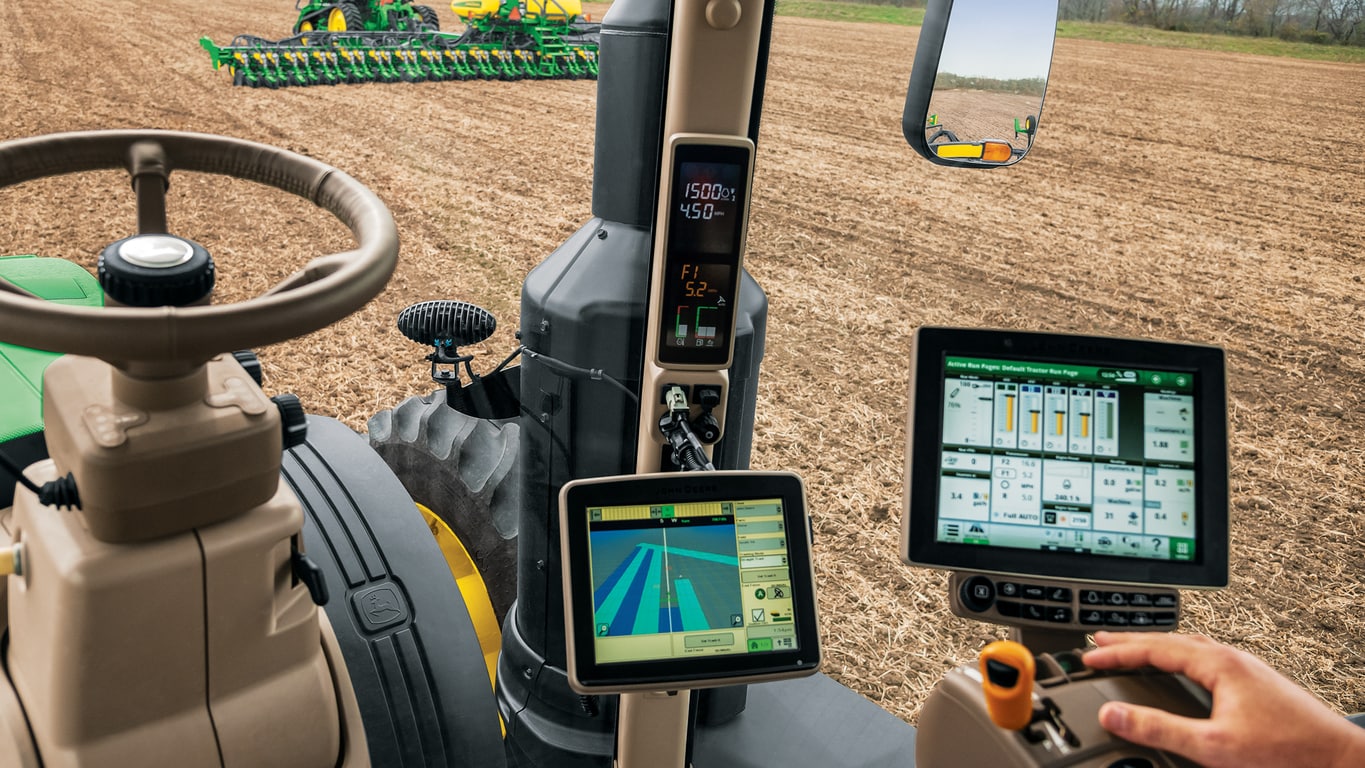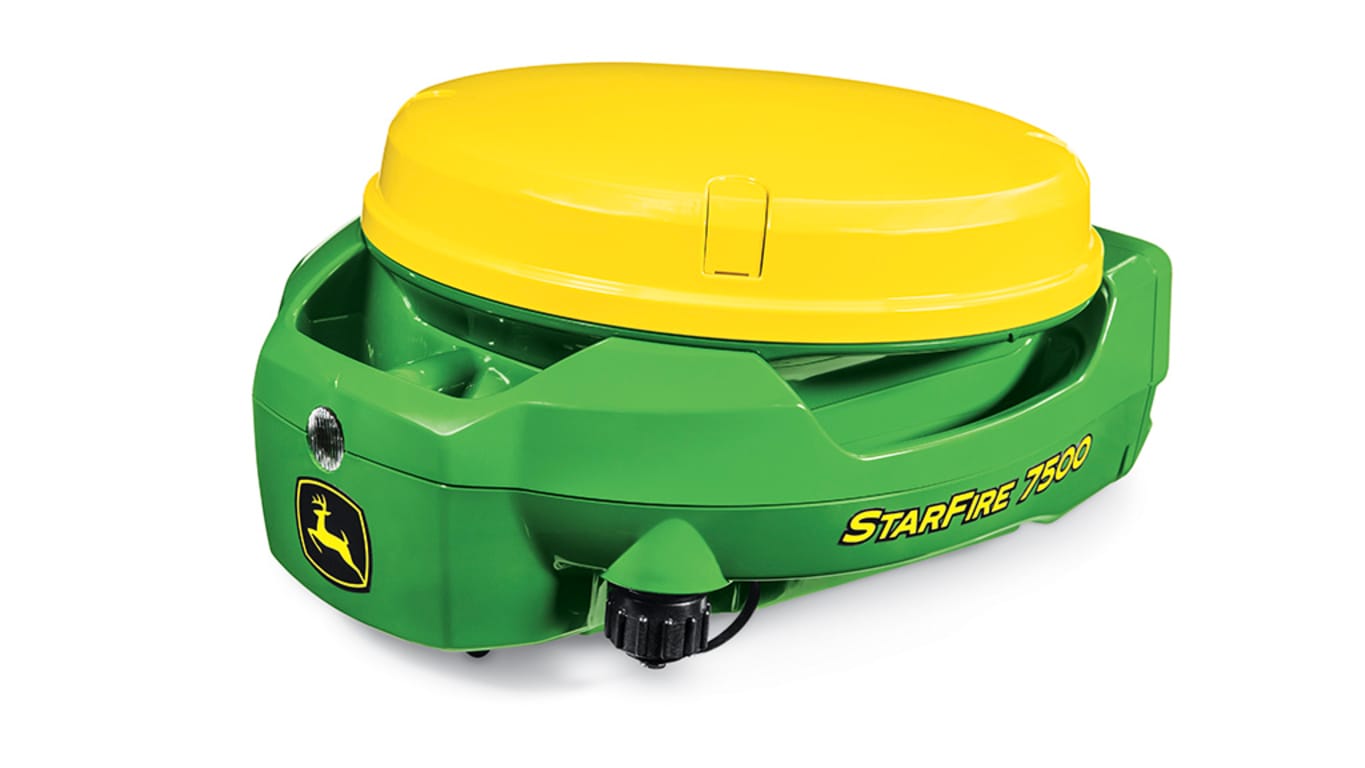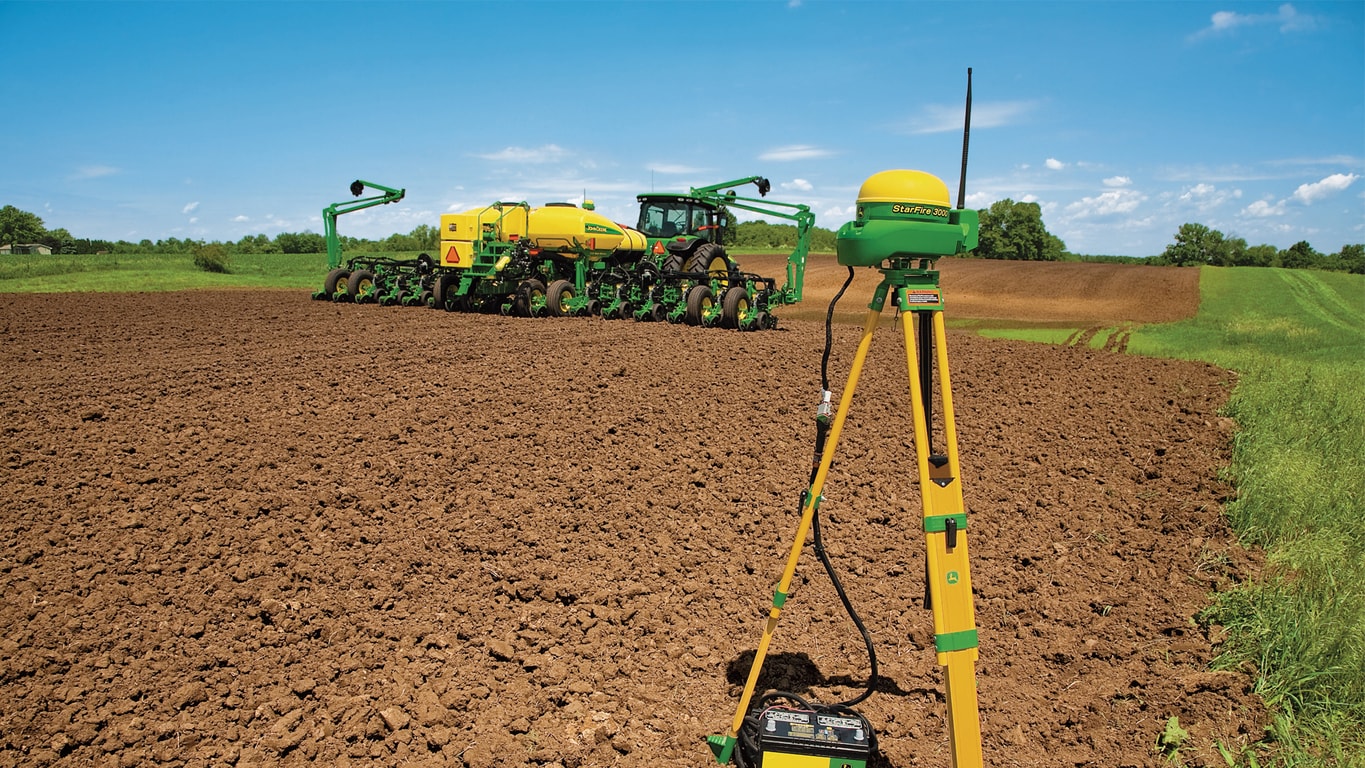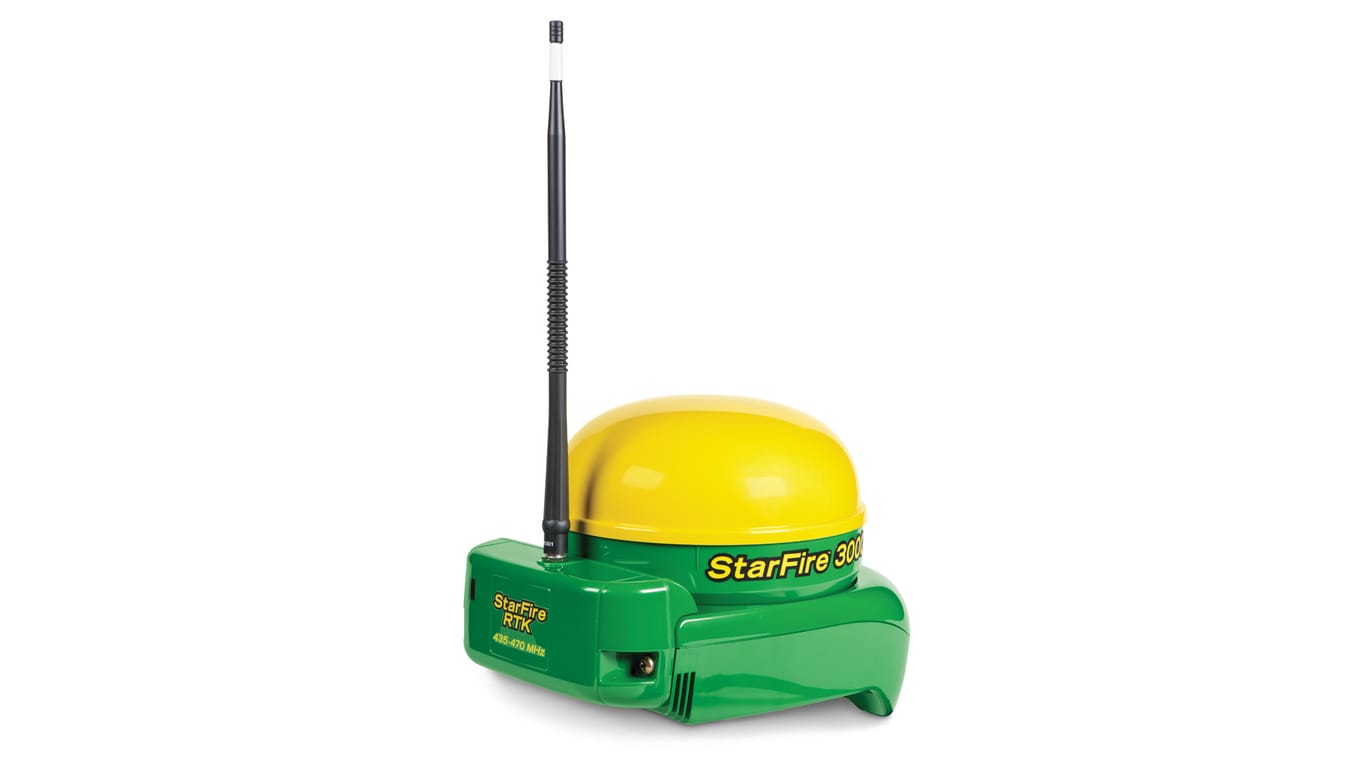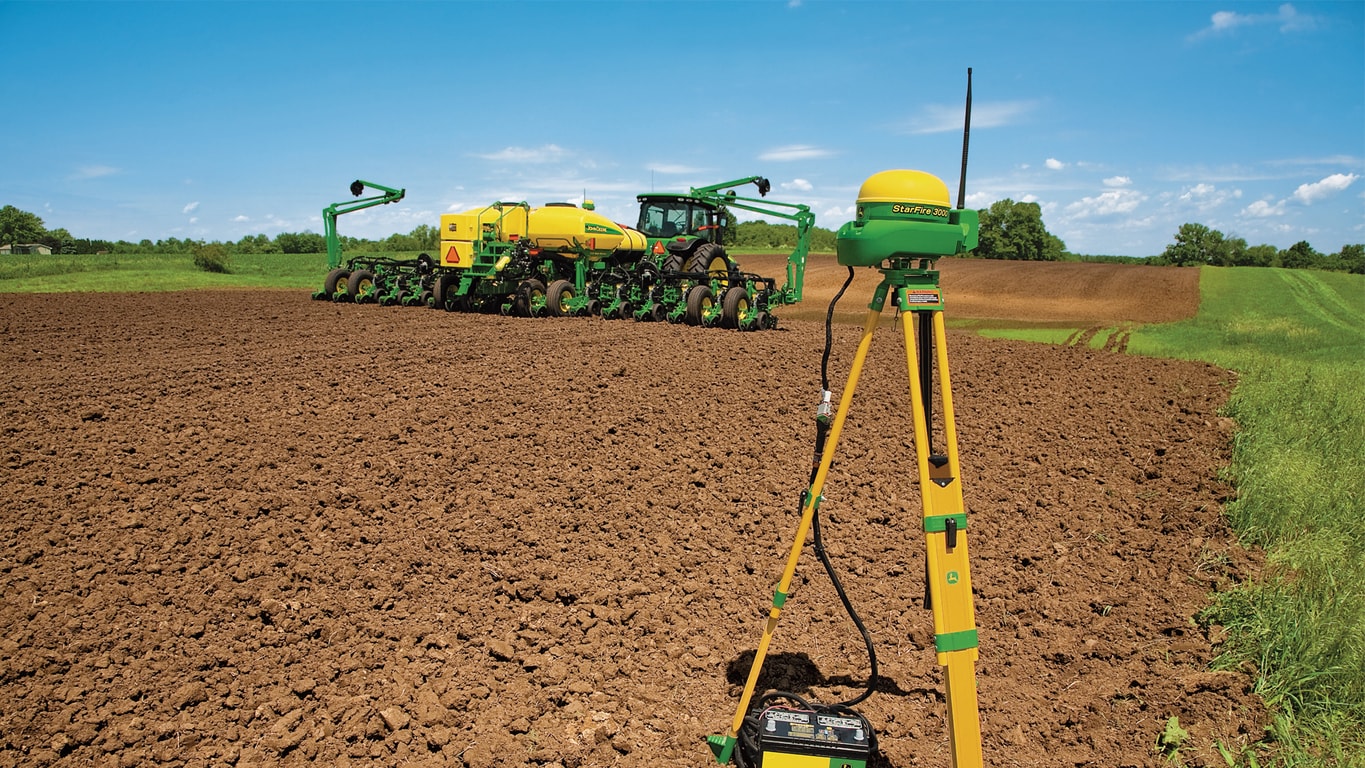Many factors contribute to the time it takes to achieve desired accuracy from the StarFire™ receiver. Global Navigation Satellite System (GNSS) signal quality can be a contributor, especially when multipath errors occur. Multipath errors occur when satellite signals reflect off nearby surfaces. When the receiver antenna captures a multipath signal, it takes time for the receiver to filter out actual GNSS signal directly from the satellite versus reflected signal from a nearby object. This contributes to the time it takes to achieve desired accuracy.
 Choke plate
Choke plate
The choke plate hardware in the StarFire 7000 Receiver more accurately directs GNSS signals into the antenna. With the addition of this choke plate, there is a 66 percent reduction in the time it takes to acquire an SF-RTK correction signal from previous generations of StarFire receivers. This means you have more time to be productive and get the job done quicker.
The StarFire 7000 and StarFire 7000 Integrated Receiver use an integrated terrain compensation module (TCM) to adjust the calculated machine position based on the terrain on which it is operating. The TCM adjusts for roll, pitch, and yaw motion to improve receiver and AutoTrac™ system performance when operating in challenging conditions such as hilly ground.
- TCM ensures accurate Section Control and AutoTrac guidance performance.
- TCM provides input data such as pitch to systems like the ActiveYield™ monitoring system on combines.
- The StarFire 7000 Integrated Receiver uses software to project into the position as the StarFire 7000 Receiver to ensure same performance and accuracy.
- The StarFire 7000 Integrated Receiver comes factory calibrated, ensuring the highest possible performance and precision.
Advanced TCM Calibration
As accuracy and repeatability continue to be more important to get to plant-by-plant accuracy, the systems in place today must evolve to enable this capability. Like the StarFire 6000, the StarFire 7000 offers an Advanced TCM Calibration feature.
Benefits:
- Removes the guesswork out of positioning a machine and implement in the exact same spot when turning around.
- Removes the need for a level surface.
- Adds higher precision to the TCM calibration by gathering and comparing multiple points.
- Calibrates both the machine and implement receiver TCM at the same time.
How it works:
- Roughly 100.6 m (330 ft) of space is required for the calibration.
- During the calibration, speed should not exceed 6.4 km/h (4 mph).
- If an error occurs during the calibration, the operator is notified.
 Advanced TCM Calibration page in the display
Advanced TCM Calibration page in the display
- Select Advanced TCM Calibration from the device list in the display.
- Follow the on-screen prompts to set up a guidance line.
- Drive the guidance line using AutoTrac automated steering from point A to point B.
- Manually turn and resume AutoTrac steering, driving the guidance line back to point A.
This completes the calibration.
Compatibility:
- StarFire 7000 Receiver or StarFire 7000 Integrated Receiver
- StarFire 6000 Receiver or StarFire 6000 Integrated Receiver with software update 20-2 or later
- Gen 4 4600 CommandCenter™ Display with software update 20-3 or later
- Gen 4 4640 Universal Display with software update 20-3 or later
- Must have an AutoTrac activation
With Ethernet connectivity on the StarFire 7000 Integrated Receiver, you can save up to 60 minutes per year while performing over-the-air software updates to keep your technology in sync with the latest features.
